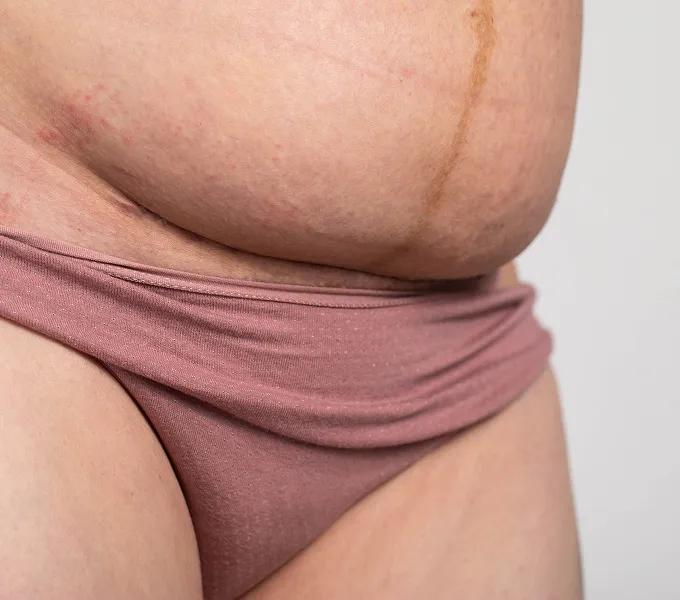
Is 'Mommy Wrist' Making It Impossible to Care for Your Baby?
De Quervain's Tenosynovitis, commonly referred to as 'mommy wrist,' 'mother's wrist,' or 'mommy thumb' is a condition where inflammation of the tendons on the thumb-side of the wrist leads to pain and stiffness. Mommy's wrist can make tasks that require you to use your hands feel hard or just impossible. If you develop De Quervain's during the postpartum period, you may struggle to lift, change, and play with your baby, which can be heartbreaking as well as painful.
Taking the time to learn about this condition and heal is so important. We're glad you're here! Keep reading to find out more about what causes mommy wrist and what to do to relieve the pain.
Symptoms & Causes of Mommy Wrist
For new moms, it's more than likely that the inflammation and pain of mommy's wrist is due to overuse as you hold, cuddle, feed, and lift your baby in and out of the crib, stroller, carseat, high chair, etc. Plus, lingering fluid retention, and ligamentous laxity may leave you more vulnerable for developing a wrist injury in the postpartum. Other possible causes of De Quervain’s Tendonitis include a direct injury to the tendons of the wrist or thumb as well as a chronic condition like arthritis that can contribute to inflammation and thickening of the tendons in the wrist.
Symptoms of DeQuervain's can include:
- Pain and tenderness in the thumb and wrist which can radiate into the forearm
- Swelling at the base of the thumb and wrist
- Difficulty using the thumb and wrist to hold objects, pinch, and more
- Numbness in the wrist or thumb
The Anatomy of Mommy Wrist
Curious to know what's happening below the surface? Let's nerd out on anatomy for a minute. With mommy wrist or De Quervain’s, inflammation impacts two muscles in particular — the abductor pollicis longus (APL) and the extensor pollicis brevis (EPB) muscles. These muscles travel from the outside of your forearm, through a synovial sheath/tunnel known as the extensor retinaculum, before attaching to the bones in your thumb.
Normally these tendons slide around pain-free in a narrow, but super hydrated, tunnel without any friction or resistance. When inflamed, the synovial sheath can become even more narrow, and the slippery substance that helps the tendons to slide around may become thickened, creating resistance and pain with nearly every thumb and wrist movement.
Will Mommy Wrist Get Better on Its Own?
It's possible that De Quervain’s will resolve over time without treatment — but only if you are able to avoid the activities that aggravate your symptoms for a long period of time (sometimes months). That's just not realistic for most new moms.
Putting up with continued pain can also lead to worsening of your condition, and even scarring that can lead to even further limitations in function. The good news is that, the vast majority of the time, symptoms can improve with treatment. Seeing a physical therapist who specializes in postpartum care and sticking to your physical therapy program is a great place to start.
In the meantime, the tips below are generally recommended to manage the pain of mommy wrist, or to help keep you out of pain altogether.
8 Tips to Ease the Pain of Mommy Wrist
1. Think "Barbie Hands"
Specific motions of your wrist and thumb can make your symptoms, and condition worse. These include:
- Tilting your wrist towards your pinky finger
- Pinching, grasping, or gripping objects
- Twisting your wrist
Altering your wrist mechanics can help. Try keeping your wrists in a neutral position, inline with your forearms — think 'Barbie hands.' Minimize tilting your wrists from side to side, or twisting, especially while you are pinching or gripping an object. When it is difficult to avoid these motions, a brace can really help (see "use a wrist splint" below).
2. Ice Your Wrist & Thumb
Since inflammation and swelling make your symptoms worse, ice and other anti-inflammatory treatments can help soothe your symptoms. Wrap an ice pack with a towel, and place it on the thumb side of your wrist for 15-20 minutes, a few times a day.
3. Give Yourself a Massage
Tension in the muscles of your forearm can intensify pain and difficulties with movement. With firm pressure, use your knuckles to gently knead the sore muscles in your forearm for several minutes, at least once a day.
4. Use a Wrist Splint
Have you ever tried using your hands without using your thumb? It’s nearly impossible. Using a spica splint — a stiff wrist brace that supports both your wrist and thumb — can be so helpful in keeping your wrist in a neutral position to help rest your tendons while you sleep, or during your daily activities that you just can’t skip. Your physical therapist will direct you on when and how long to wear the splint. They will also help you feel confident you are wearing your splint properly. Origin PT Emma Kaeser, PT, DPT says that she notices that patient will often "wear their splint too tight". Improperly fit wrist splints may increase pain, and even prolong healing.
5. Loosen your grip
Without even realizing it, you may be holding onto things much tighter than you need to, which will further aggravate your symptoms. If you notice your knuckles turning white as you grip the steering wheel, or pressure marks and cramping on your fingers while you write, be conscious of loosening your grip. When it comes to grip strength, Origin PT and Brentwood's Clinical Director Jen Carr, PT, DPT, OCS, PRPC always tells her patients "as much as necessary, as little as possible!"
6. Switch up your texting fingers
Until they are in pain, you don’t realize how much you use your thumbs as you text and scroll on your phone. Help to rest your tendons by consciously using your index fingers to text instead.
7. Lift and carry with better mechanics
When lifting and carrying, we tend to focus a lot on proper lower body mechanics: Lift with your legs, with a wide base of support and a neutral back for example — but your upper body is just as important to consider, especially when you have wrist or thumb pain. For her patient's with De Quervain's, Natalie Russell, PT, DPT, OCS, Origin PT and San Francisco Clinical Director always trys to focus on strength and stability in the shoulder girdle, and to improve upper body lifting mechanics. In addition to the usual lower body mechanics while lifting and carrying, bring the object (or your baby) close to your body, and draw your shoulder blades together and down. This will help to create support in your upper back, and shift a heavier load from your wrists and forearms, to your core and lower body.
8. Slowly & Safely Build Strength
Pain and stiffness in your joints can really impact your muscle strength and coordination, which are very important for your hand function. Please don't DIY wrist exercises as it's very easy to make the condition worse instead of better. Working with a physical therapist is probably easier and more affordable than you think, especially if you book a virtual visit at Origin. We're here to help!




